Sound Association Normal Alphabet Worksheets for Ages 6-7
10 filtered results
-
From - To
Welcome to our "Sound Association Normal Alphabet Worksheets" designed for children ages 6-7! These engaging worksheets help young learners connect sounds to letters, reinforcing their understanding of phonics. Each activity encourages kids to identify beginning sounds through fun illustrations and interactive tasks. Ideal for enhancing literacy skills, our resource promotes critical thinking and creativity as students explore letter sounds in a supportive environment. Whether in the classroom or at home, these worksheets provide a valuable tool for teachers and parents alike. Foster a love for reading and language with our delightful sound association activities that make learning enjoyable!


Long and Short Vowel Match up Reading Worksheet
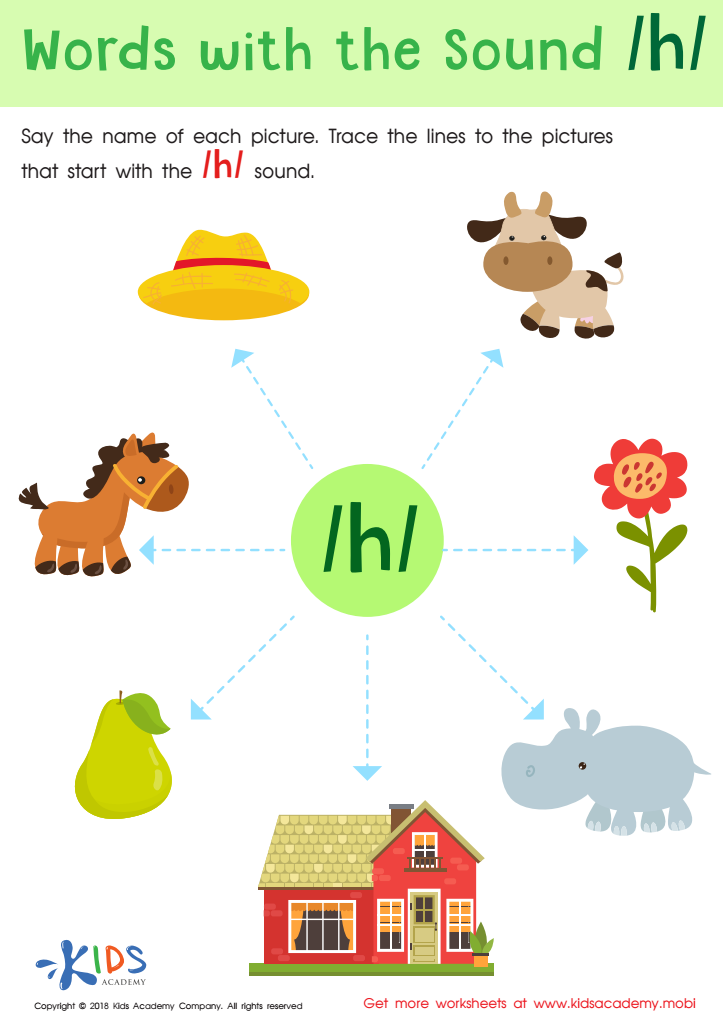

Words with sound h Reading Worksheet
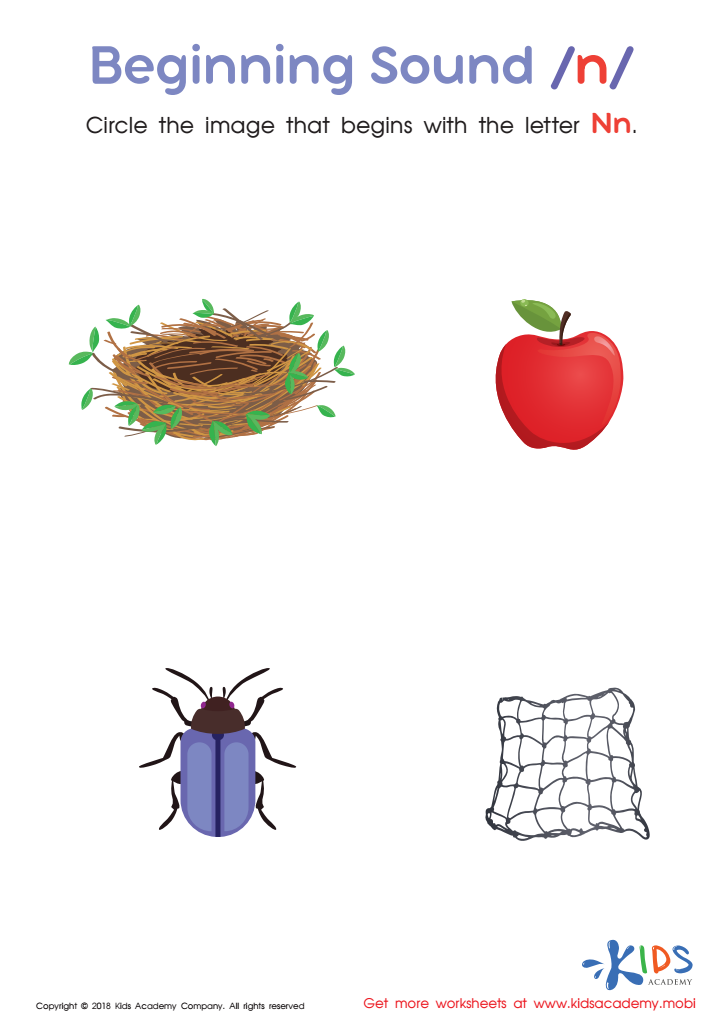

Beginning Sound «n» Worksheet
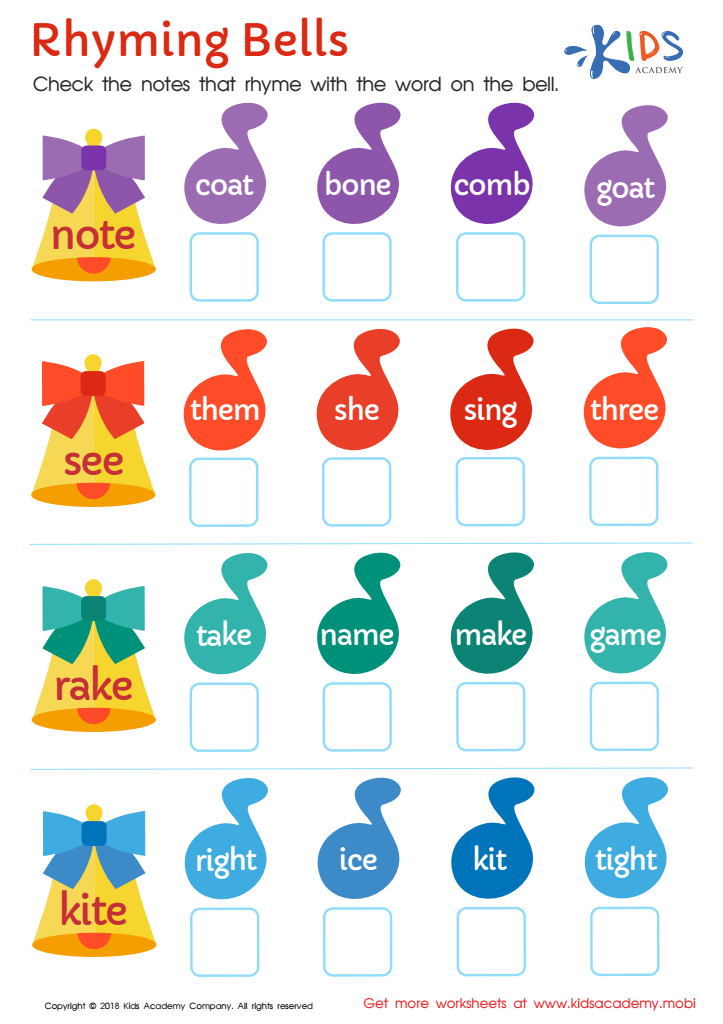

Rhyming Bells Worksheet
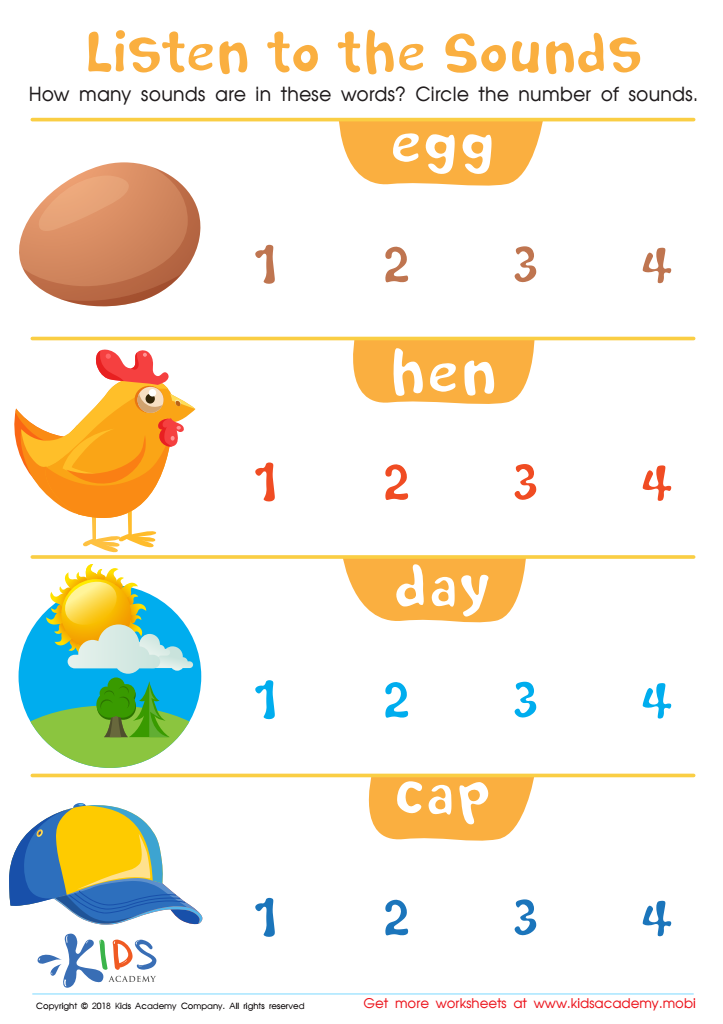

Listen to the Sounds Worksheet
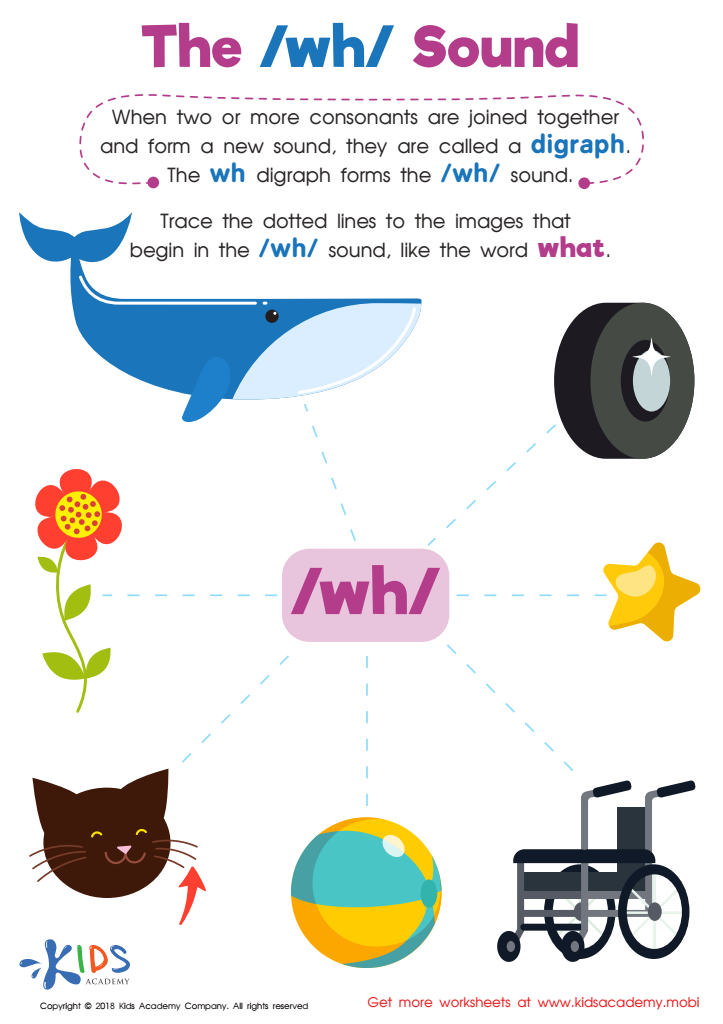

The /wh/ Sound Worksheet
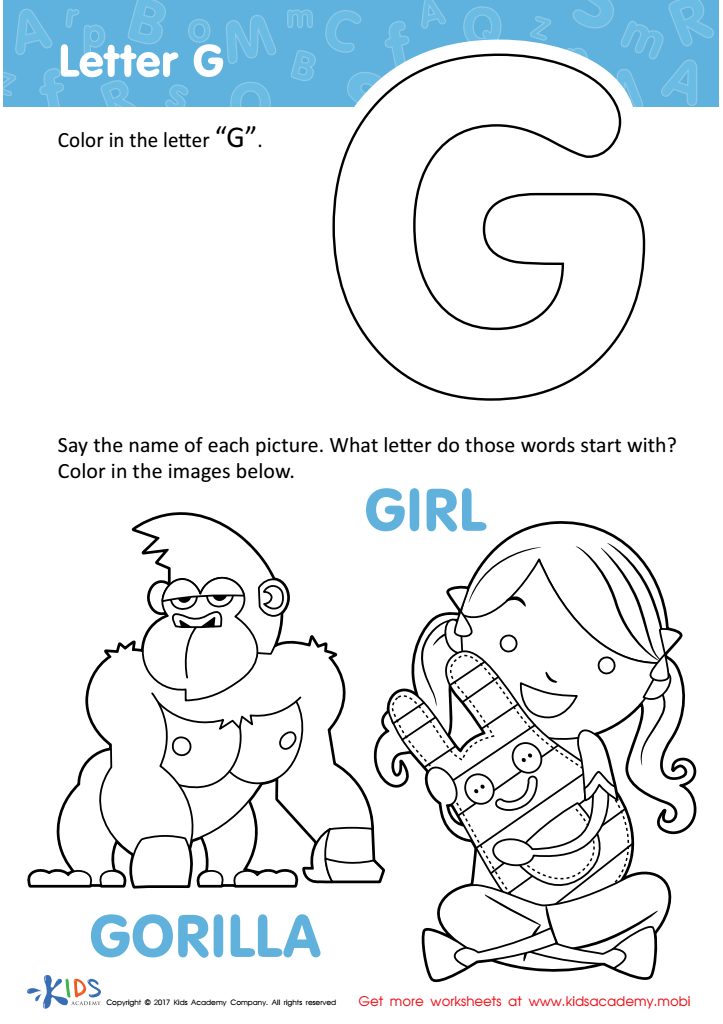

Letter G Coloring Sheet
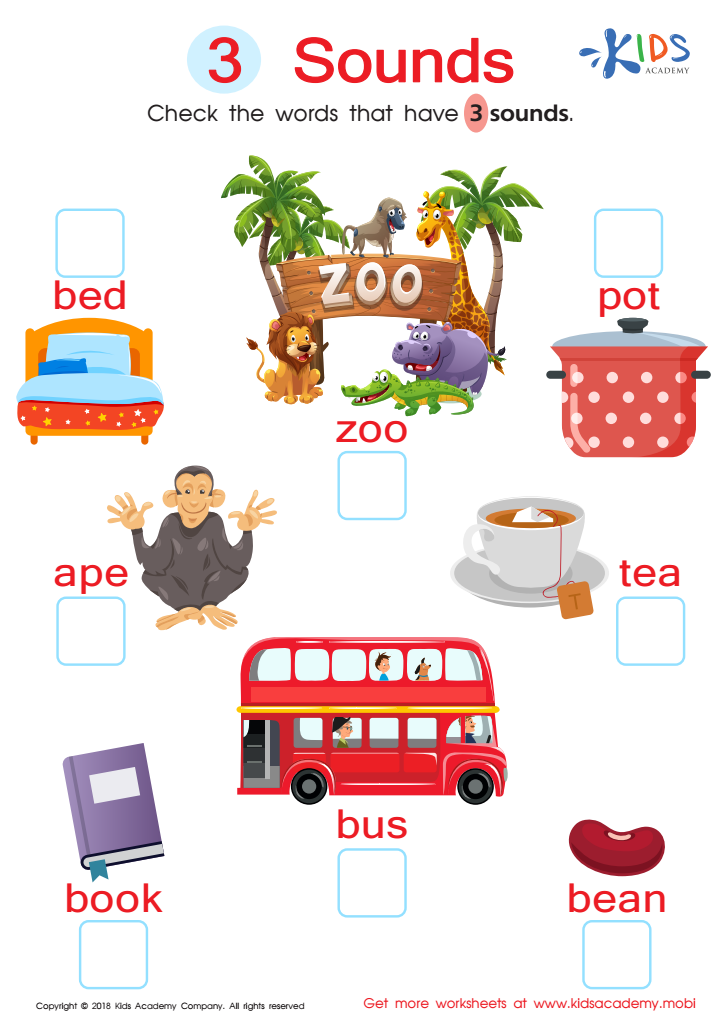

3 Sounds Worksheet
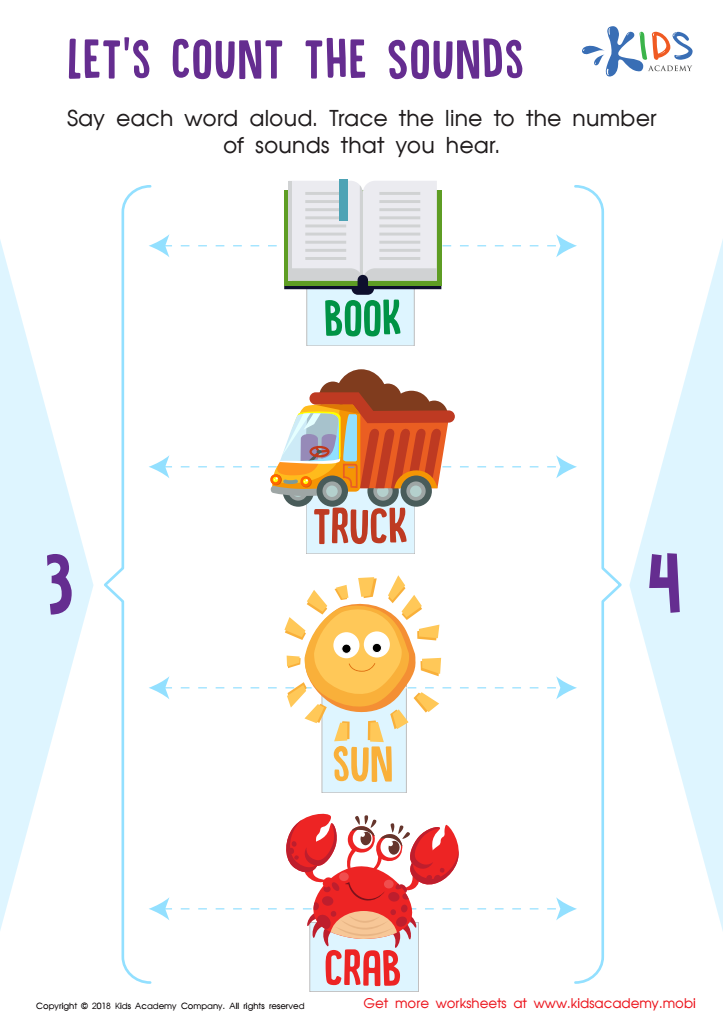

Let's Count the Sounds Worksheet
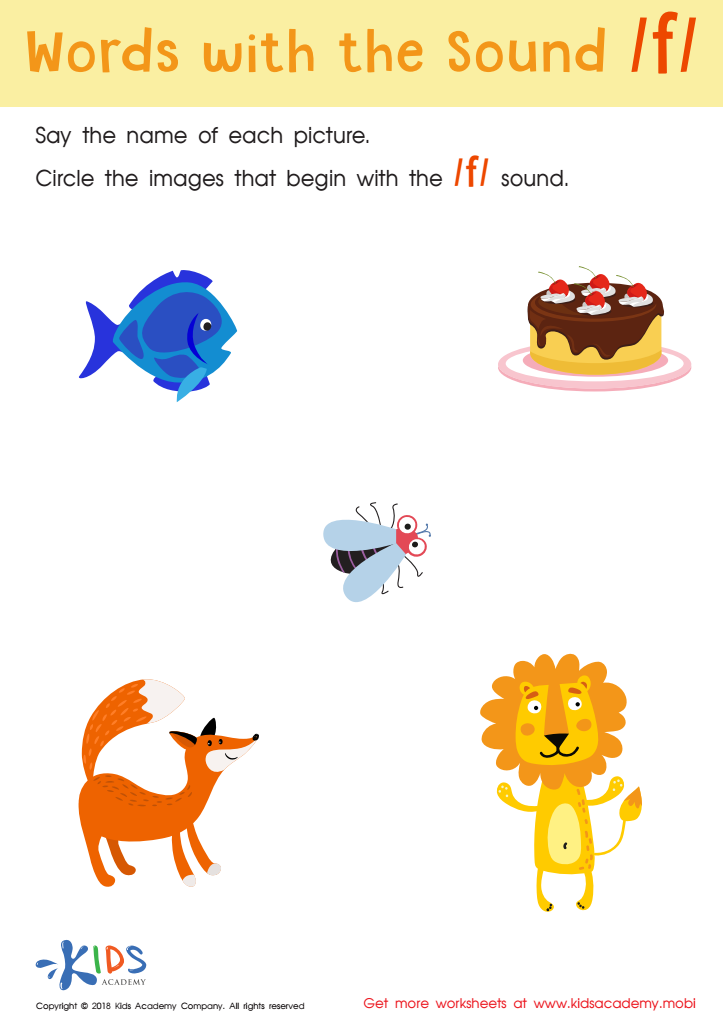

Words with sound f Reading Worksheet
Parents and teachers should prioritize the Sound Association Normal Alphabet for ages 6-7 because it lays a crucial foundation for literacy and language development. During this age, children are transitioning from learning to read to reading to learn. Understanding the relationship between sounds and letters equips them with the tools they need to decode words, which is essential for their overall academic success.
By focusing on sound association, children learn to recognize phonemes—the smallest units of sound—in spoken language. This skill enables them to blend sounds into words and segment words into sounds, improving their reading fluency and comprehension. Additionally, strong phonetic skills contribute to improved spelling and vocabulary acquisition, making it easier for children to express their thoughts in writing.
Moreover, at this stage, children develop a sense of confidence and joy in reading, which can foster a lifelong love of learning. Engaging in sound association activities—like rhymes, games, and songs—creates an interactive and enjoyable learning environment. Thus, ensuring that children understand the Sound Association Normal Alphabet is of paramount importance in nurturing their reading skills, boosting academic performance, and instilling a foundation for effective communication. Parents and educators play vital roles in facilitating this learning journey.
 Assign to My Students
Assign to My Students













